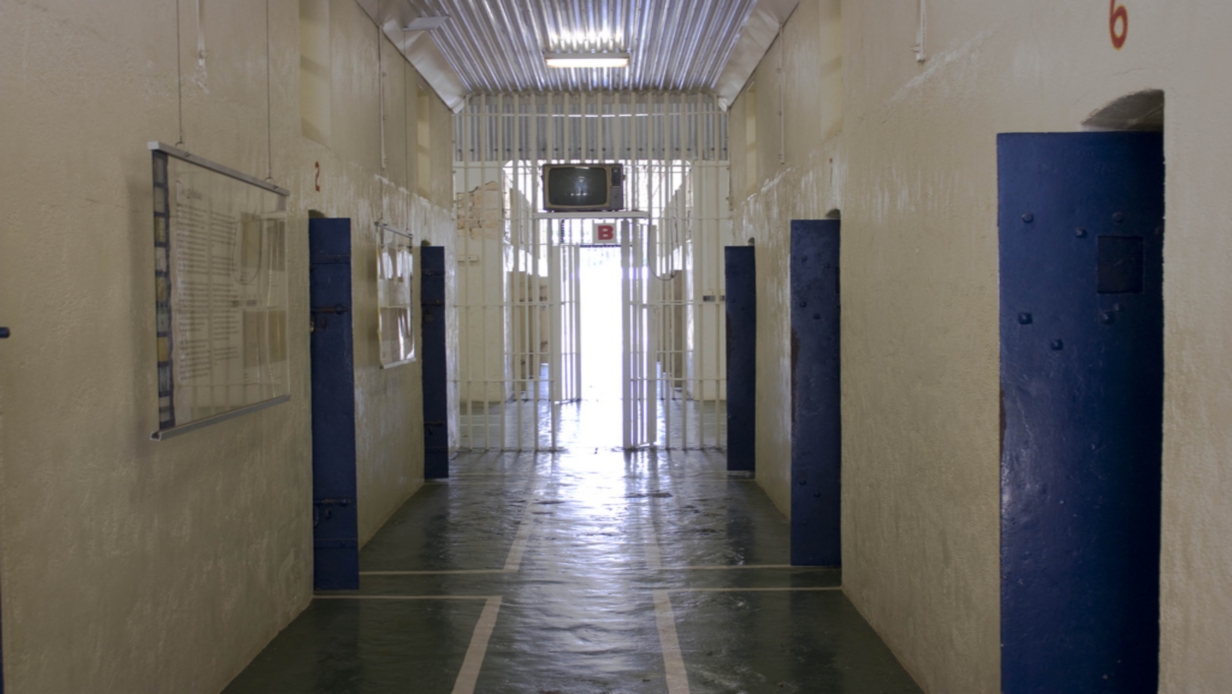Comment: Don't be fooled by this 'progressive philosophy' bit. The reason why prisons are closing probably has to do with ordinary austerity measures.More than half of the prisoners will have to share a prison cell.
Some say the main reason is that judges increasingly hand down community service and GPS ankle-band sentences instead of jail terms.
On one hand rapists and paedophiles get away with light sentences, if they are sentenced at all. On the other hand people that write too many letters to their council or steal exam papers (and are pupils at an Islamic school) will face time in prison.
The Criminal Justice Alliance (CJA), representing over 60 organisations, called for the government to urgently limit "unnecessary use of prison, ensuring it is reserved for serious, persistent and violent offenders for whom no alternative sanction is appropriate".
In 2009, the Dutch justice ministry announced a plan to close eight prisons in the Netherlands. Why? A declining crime rate that is expected to continue. In 2013, a staggering 19 prisons were scheduled to close. Officials have announced they are in the process of cutting 3,500 jobs.
How did they do it?
Primary reasons for fewer offenders and prisoners in the Netherlands include a continued general decline in crime rates, a focus on rehabilitation of offenders, progressive drug laws, and also, those convicted are choosing electronic tagging instead of incarceration.
Comment: Police have been coming down hard on people that grow weed for some time now. The laws are progressive for those high-up that are involved in the drug trade.
The tagging allows people to go back to work and continue as productive members of society. Not only that, it saves approximately $50,000 per year per person (about $50 million saved annually for every 1000 people).
A prison overcrowding report last year in the Netherlands noted that surging prison populations undermined rehabilitation of prisoners and risked increasing reoffending in the future.
Declining crime rates in the Netherlands mean that, although the country has the capacity for 14,000 prisoners, there are only 12,000 detainees, reported the nrc.nl.
The decrease is expected to continue, the ministry said, with Deputy justice minister Nebahat Albayrak saying that natural redundancy and other measures should counter any forced lay-offs.
Johnson County and the Netherlands have something in common. The average incarceration rate in the Netherlands is about 163 people per 100,000. In Johnson County, the rate of incarceration is the about the same - slightly lower. (Source: 2012 Annual Sheriff's Report - PDF)
Counties and countries with low incarceration rates typically take a different approach to criminal justice and investing in social services.
In comparison, the United States "tough on crime" focused justice and prison systems are failing miserably. Overall, the incarceration rate is 10 times higher in the U.S. than it is in the Netherlands.
The Dutch largely kept the Napoleonic Code after their independence, but made it significantly more rehabilitative. The Dutch incarceration philosophy stresses the need to minimize hardships on the prisoner and emphasizes maximizing prisoner contacts with family and the preservation of community ties. (Downes, David. (2007) Visions of Penal Control in the Netherlands, p. 117. Chicago: University of Chicago Press, 2007. ISBN 0-226-80664-5)
Crime rates have fallen slightly in recent years in the Netherlands but are not notably lower there than in neighboring countries,
Prisoners are able to enjoy many of the benefits of life on the outside. For example, inmates can receive visitors once a week, talk on the phone, and participate in sports.
Sources: True Activist, News 13 (Amsterdam), Wikipedia, We Are Change Netherlands, www.beyondblindfold.com, Eric Barlow





I am reminded of a friend who visited a developing
country. He said, in that country, the bad people go
free and the good people were all in jail. People who
had businesses and assets all behind high walls and multiple
locks.
Two factors may enter into falling crime
rates in the Netherlands. Increased surveillance may make
society appear moral, but mask corruption.
Failure to prosecute leads people to stop reporting minor offenses.
To what extent does marijuana use lead to falling violent crime? A
few become more violent, but most become less so.